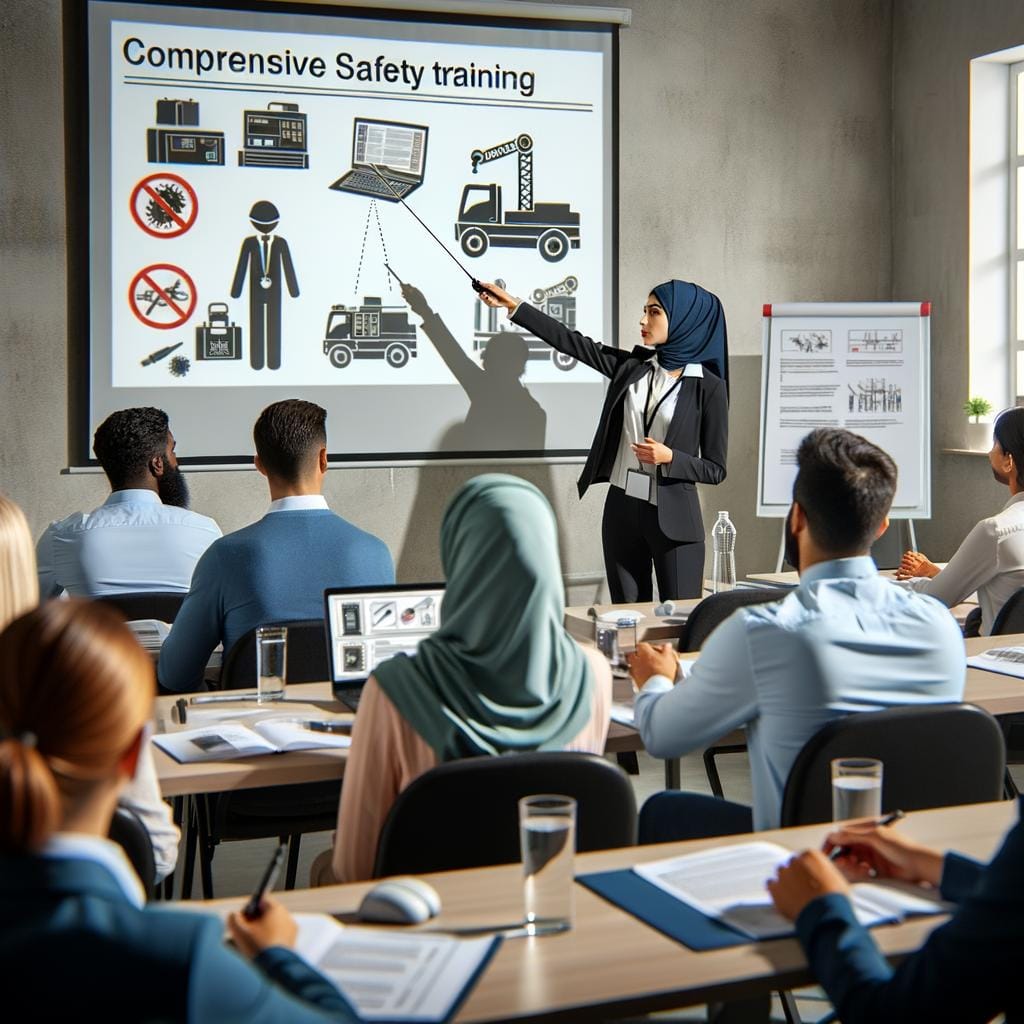Climb Training is a vital aspect of preparing oneself for the challenges and thrills of climbing. Enthusiasts who aspire to scale new heights and conquer difficult terrains understand the significant role that specialized training plays in their journey. From bouldering to sport climbing, developing the necessary skills, strength, and endurance through proper training can make all the difference in reaching your climbing goals.
Whether you are drawn to traditional rock climbing or prefer the adrenaline rush of indoor climbing gyms, understanding the benefits and importance of climb training is essential. It goes beyond just physical strength; it involves mental preparation, technical skills, and proper nutrition to support your climbing endeavors. By delving into different types of climbing and tailoring your training methods accordingly, you can enhance your performance and minimize the risk of injuries.
In this article, we will explore various aspects of climb training, from physical fitness requirements to equipment essentials, mental preparation techniques, effective training methods, nutrition tips for climbers, injury prevention strategies, and more. By the end of this comprehensive guide, you will have a deeper understanding of what it takes to excel in the world of climbing and be inspired to embark on your own journey towards improving your climbing skills.
Types of Climbing
Rock climbing is a diverse sport that encompasses various types, each requiring unique skills and techniques. One of the most common forms of climbing is traditional climbing, often referred to as trad climbing. Trad climbing involves placing removable protection as you ascend the rock face, relying on your gear placements for safety.
This type of climbing demands a high level of technical skill and mental fortitude, as climbers need to make quick decisions about which gear to place and how to navigate the route. Training for trad climbing typically involves honing these technical skills, practicing efficient gear placements, and improving endurance for longer climbs.
Another popular type of climbing is sport climbing, where fixed anchors are already placed in the rock wall for protection. Sport climbing tends to focus more on strength and power compared to trad climbing, as climbers often encounter challenging moves that require explosive movements to progress up the route.
Training for sport climbing may involve specific exercises to strengthen finger grip, upper body muscles, and core stability. Additionally, working on dynamic movements and precise footwork can greatly enhance a climber’s performance in sport routes.
Bouldering is a form of climbing that is done close to the ground without ropes, relying on crash pads for protection in case of falls. Bouldering routes are typically short but intense, emphasizing powerful moves and intricate sequences that demand coordination and problem-solving skills.
Training for bouldering often includes dynamic movements training such as campus board exercises, hangboard workouts focusing on finger strength, and improving flexibility through stretching routines. Climbers looking to excel in bouldering competitions or outdoor projects may also incorporate specific mental training techniques like visualization and focus drills into their climb training regimen.
| Type of Climbing | Main Focus |
|---|---|
| Traditional Climbing (Trad Climbing) | Technical skill and mental fortitude |
| Sport Climbing | Strength, power, and explosive movements |
| Bouldering | Powerful moves, coordination, problem-solving skills |
Physical Fitness for Climbing
When it comes to climb training, physical fitness plays a crucial role in enhancing performance and preventing injuries. Climbing requires a unique combination of strength, flexibility, and endurance in specific muscle groups. Understanding the muscle groups involved can help climbers tailor their training regimen to improve overall climbing abilities. Here are some key muscle groups that play a significant role in climbing:
- Forearms: Strong forearms are essential for gripping holds and maintaining control while climbing.
- Core muscles: A strong core helps climbers maintain stability and balance on the wall.
- Leg muscles: Powerful leg muscles provide the necessary push-off power for ascending steep inclines.
- Back and shoulder muscles: These muscles help support body weight and enable climbers to reach for holds effectively.
In addition to strength, cardiovascular endurance is also vital for sustained performance during climbs. Climbers need to have good cardiovascular fitness to maintain energy levels throughout long ascents. Improving cardiovascular endurance can be achieved through activities like running, cycling, or high-intensity interval training (HIIT). Incorporating cardio workouts into a climb training routine can help enhance climb performance and overall fitness levels.
To target these specific muscle groups and improve cardiovascular endurance for climbing, climbers can incorporate various exercises into their training regimen. Strength-training exercises like pull-ups, dead hangs, planks, and squats can help build the necessary strength for climbing movements.
Additionally, cardio-focused activities such as running, hiking with a weighted backpack, or using a stair climber can help improve endurance levels. By focusing on both strength training and cardio workouts tailored to climbing needs, enthusiasts can elevate their skills and effectively prepare for challenging climbs ahead.
Equipment for Climb Training
When it comes to climb training, having the right equipment can make a significant difference in your performance and progress. One of the most crucial pieces of gear for climbers is a good pair of climbing shoes. These specialized shoes are designed to provide traction on various surfaces while also offering support for your feet during climbs. It’s essential to find a pair that fits well and provides comfort for those long training sessions.
In addition to climbing shoes, harnesses are another vital piece of equipment for climb training. Harnesses are necessary for safely securing yourself to ropes during climbs, whether you’re practicing indoors or tackling outdoor routes. Make sure to choose a harness that fits properly and is suitable for the type of climbing you’ll be doing, whether it’s sport climbing, trad climbing, or bouldering.
Another essential item for climb training is a chalk bag. Chalk helps keep your hands dry and improves your grip on holds, especially when tackling challenging routes that require strength and precision. Investing in a quality chalk bag and chalk can enhance your performance during training sessions and ultimately help you improve your climbing skills over time.
| Equipment | Importance |
|---|---|
| Climbing Shoes | Provide traction and support during climbs |
| Harness | Safely secures climbers to ropes during climbs |
| Chalk Bag | Keeps hands dry and improves grip on holds |
Mental Preparation
Visualizing Success
Visualizing success is a powerful mental technique that can greatly benefit climbers during training. By mentally rehearsing difficult climbs, visualizing successful outcomes, and picturing themselves overcoming obstacles, climbers can build their confidence and mental preparedness. This technique not only helps in boosting motivation but also enhances focus and concentration, essential elements for successful climbing sessions.
Breathing Techniques
In climbing, proper breathing techniques can make a significant difference in endurance levels and overall performance. Climbers often encounter challenging situations that require controlled breathing to manage stress and anxiety. Practicing deep breathing exercises can help climbers stay calm under pressure, maintain focus, and sustain energy levels throughout their training sessions. By incorporating specific breathing techniques into their climb training routine, climbers can enhance their mental resilience and improve their overall performance.
Mindfulness Practices
Mindfulness practices involve being fully present in the moment, which can be especially beneficial for climbers facing mentally demanding routes or training sessions. By practicing mindfulness techniques such as meditation or yoga, climbers can learn to let go of distractions, negative thoughts, or fear of failure.
This mental clarity allows them to focus on the task at hand with a clear mind and positive mindset. Incorporating mindfulness practices into climb training not only improves mental strength but also aids in developing a deeper connection between the mind and body, leading to better overall performance on the wall.
Training Techniques
Strength Training
One of the most crucial aspects of climb training is strength training. Building strength in specific muscle groups such as the forearms, back, and core is essential for improving climbing skills. Exercises like pull-ups, dead hangs, and planks can help develop the necessary muscles needed for climbing. Incorporating weightlifting exercises like squats and bench presses can also contribute to overall body strength which translates to better performance on the wall.
Endurance Workouts
Endurance plays a significant role in climbing, especially during long routes or challenging bouldering sessions. To improve endurance, climbers can engage in cardio exercises such as running, cycling, or rowing to build up cardiovascular fitness. High-intensity interval training (HIIT) can also be beneficial for simulating the intensity of climbing sequences and improving stamina. Additionally, performing long traverse routes on a climbing wall can help build up endurance specific to climbing movements.
Technique Drills
While strength and endurance are vital components of climb training, technique drills are equally important for climbers looking to improve their skills. Practicing footwork drills, balance exercises, and route reading can enhance a climber’s ability to navigate different routes efficiently.
Utilizing hangboards or fingerboards for grip strength drills and focusing on body positioning during climbs can also refine technique and form. By consistently incorporating technique drills into training sessions, climbers can hone their skills and become more adept at tackling various climbing challenges.
Nutrition for Climbers
When it comes to climb training, proper nutrition plays a crucial role in supporting your endurance, muscle recovery, and overall performance. Fueling your body with the right nutrients can make a significant difference in how well you perform during climbing sessions and how effectively your muscles recover post-workout. Here are some key components to consider when designing a balanced diet for climbers:
- Hydration: Staying hydrated is essential for climbers as dehydration can lead to decreased performance and muscle cramps. Make sure to drink plenty of water before, during, and after your climbing sessions.
- Carbohydrates: Carbs are the primary source of energy for climbers, providing fuel for long-lasting endurance. Incorporate complex carbohydrates such as whole grains, fruits, and vegetables into your meals to sustain energy levels.
- Protein: Protein is essential for muscle repair and growth, making it crucial for climbers who put their muscles under constant strain. Include lean sources of protein like chicken, fish, tofu, or legumes in each meal to support muscle recovery.
In addition to these macronutrients, climbers should also pay attention to their micronutrient intake to ensure optimal performance. Nutrients like vitamins C and E can help reduce exercise-induced oxidative stress and inflammation, while minerals like iron and calcium are important for overall bone health and muscle function. To maximize your climbing training results, focus on consuming a well-rounded diet that provides all the necessary nutrients your body needs to excel at this demanding sport.
- Avoid sugary drinks and foods high in saturated fats as they can lead to energy crashes during climbs.
- Plan out pre-climb snacks that include a mix of carbohydrates and proteins for sustained energy levels.
- Consider working with a sports nutritionist who can provide personalized guidance on optimizing your diet for climb training.
Injury Prevention
One key element of injury prevention in climb training is proper warm-up and cool-down routines. Before tackling challenging routes, it’s essential to prepare your muscles and joints for the physical demands of climbing. Dynamic stretches, mobility exercises, and light cardio can help increase blood flow to the muscles and prevent strains or tears during climbs. Likewise, ending a session with static stretching and gentle movements can aid in muscle recovery and reduce stiffness.
Additionally, focusing on strength training for the muscle groups involved in climbing can help prevent overuse injuries. Building up muscular endurance in the forearms, shoulders, back, and core can not only improve performance but also protect these areas from strain.
Incorporating exercises such as fingerboard hangs, pull-ups, planks, and shoulder stabilization drills into your climb training regimen can strengthen these muscles and reduce the risk of injury. Remember to gradually increase intensity to avoid putting too much stress on your body too soon.
Conclusion
In conclusion, climb training is a vital aspect of becoming a skilled and successful climber. By understanding the benefits and importance of specialized training for climbing enthusiasts, individuals can enhance their physical fitness, mental preparation, and technical skills required for different types of climbing. Whether it be rock climbing, bouldering, or mountaineering, training methods may vary but the core principles remain the same: dedication, consistency, and perseverance.
It’s crucial for climbers to focus on building specific muscle groups such as the forearms, back, and core while also improving cardiovascular endurance to tackle challenging routes with ease. Additionally, having the right equipment for climb training sessions is essential to ensure safety and efficiency in workouts. Mental strength is equally important in facing fears, staying focused during climbs, and pushing through tough situations.
By incorporating proper nutrition guidelines and injury prevention strategies into their training regimen, climbers can optimize their performance and longevity in the sport. Ultimately, climb training is not just about physical strength but also about mental toughness and skill development.
Aspiring climbers are encouraged to embark on their own journey towards improving their climbing skills by embracing challenges, seeking guidance from experienced climbers or coaches, and never giving up on their passion for conquering new heights. Remember: every climb is an opportunity for growth and self-discovery.
Frequently Asked Questions
How Do You Train for Climbing?
Training for climbing involves a combination of strength training, endurance work, flexibility exercises, and skill practice. Specific exercises like pull-ups, core work, fingerboarding, and campus boarding help to target the muscles used in climbing. It’s important to develop both physical and mental strength through consistent training sessions.
How Do You Get in Shape to Climb?
Getting in shape to climb requires a holistic approach that includes building muscle strength, improving cardio fitness, and increasing flexibility. Engaging in activities like running, hiking, weightlifting, yoga, and Pilates can help climbers improve their overall fitness level. Additionally, incorporating activities like bouldering or indoor climbing sessions can specifically target climbing skills.
How Do Beginners Get Stronger for Climbing?
Beginners can get stronger for climbing by focusing on building foundational strength through bodyweight exercises like push-ups, planks, squats, and lunges. Climbing regularly at indoor gyms or outdoor crags helps beginners develop technique and grip strength. Gradually increasing the difficulty of climbs and incorporating hangboard workouts can also aid in strength progression.
Building a strong core is crucial for stability on the wall as well. By consistently practicing climbing skills and strength-building exercises, beginners can see significant improvement over time.

An avid outdoor enthusiast, writer, and environmental advocate who has spent over two decades exploring the world’s most breathtaking landscapes. With a background in environmental science and a passion for adventure, Frances combines her love for nature with her talent for storytelling to inspire others to embark on their own outdoor journeys.





